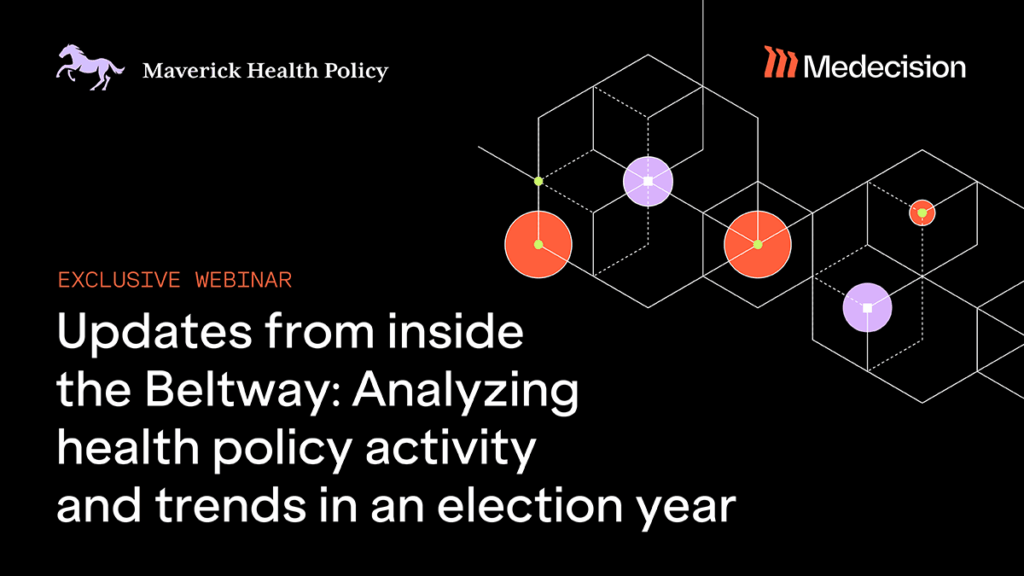
By Terri Steinberg, Chief Medical Officer and Chief Strategy Officer, Medecision
In this final post in my series on modern data platforms (click here for parts one and two), I want to look at what can occur in the realm of member and provider outreach when a data platform can analyze and respond to real-time streaming data.
Consider a scenario in which data streamed from a local health information exchange (HIE) indicates that one of your members has just, at 7:52 pm, been released from the hospital. A modern data platform can ingest and analyze that information and trigger an action based on a series of rules.
- The data platform might first send a text or email message to the provider who admitted the member to the hospital, or to the care manager, to alert that individual that the member had been discharged.
- Diagnosis-based rules might then direct the data platform to send a message to the member, telling him or her that they should schedule a follow-up visit with their provider or care manager to discuss their hospital stay and the results of certain tests or procedures — and the data platform could include a link in the message that connects the member to a scheduling system through which they could make a follow-up appointment.
- Concurrently, the data platform could set up an alert for the member’s care manager to follow up with the member at a specified time if the member has not, by that time, used the message link to schedule a follow-up appointment.
- Finally, the data platform could trigger an event that would cause appropriate informational materials to be sent to the member, saving the member the need to go searching for more information.
The permutations on this automated outreach process are manifold: If the member simply went to the hospital for tests, the automated outreach system could connect the member to a portal page explaining the results of the tests. If the test results fall within a normal range and no physician follow-up is necessary, an email or text message (or an automated phone call) could deliver that information automatically to the member. Conversely, if the test results were outside the expected range, the message from the data platform could provide the link to the scheduling system and tell the member that they should use the link to book a time to confer with their care manager for follow-up.
It should be noted that the outreach initiated by a modern data platform can also be triggered by other than externally-streamed data. A population health management campaign might analyze member records to determine who has not been in for a routine check-up in some number of months — a number that might vary by campaign depending on population segmentation. The campaign might look for infants that have not received specific immunizations or members that have been diagnosed with specific conditions in the past and who might be at elevated risk for pneumonia as flu season arrives. Alternately, the campaign might capture HRA information in a health screening campaign. In any of these scenarios, the enterprise-scope rules engine of a modern data platform could trigger a series of communications — to members, their caregivers, their providers, their care managers, or any combination thereof — that both engage and enable the recipient to take action. For a member and his or her caregivers, it might be a message that provides information, reassurance, or links to resources or systems designed to expedite care; for practitioners and care managers, the communications might include links to member histories, alerts, a notification that it is time for direct follow-up, or some other detail that can lead to better outcomes in member care.
Unlike a modern data platform, the capabilities of old-school data platforms/warehouses are retrospective and not transactional. Typically the kinds of outreach described above need to be initiated by an individual and may not occur in real time. An outreach that is based on data warehouse insights may occur only when a care manager runs a query that updates the data warehouse with information from the HIE about ADT events occurring since the last update. While data warehouse platforms are useful, their analytics are retrospective and cannot generate real-time messages and triggers to members, members, providers, or care managers.
In a modern data platform, all these activities are streamlined and automated; the services required to analyze data in real-time, to trigger rules in response to specific cues, and to execute actions such as sending text messages or outbound phone calls are built into the system. A human being could use the data platform to initiate any of these types of communication, but, when a modern data platform is involved, human intervention is not required. The modern data platform can automate those actions based upon real-time data analysis and a powerful rules engine that has been designed to support the needs of the modern health care ecosystem.


About The Author: Terri Steinberg, MD, MBA, FACP, FAMIA
As Medecision's Chief Medical and Strategy Officer, Dr. Terri Steinberg is responsible for enhancing Medecision's analytics, clinical informatics and data intelligence capabilities. Dr. Steinberg uses her experience to guide Medecision's implementation of clinical systems for its customers to ensure they achieve optimal workflows and value from our software. As a clinician as well as a software designer, Dr. Steinberg has lectured and consulted extensively on methods to ensure successful technology adoption by physicians and nurses, on the positive impact of technology on safe medication practice, and on the use of technology to drive Population Health Management. Dr. Steinberg was previously the Chief Health Information Officer and Vice President of Population Health Informatics at ChristianaCare, a large multi-entity healthcare organization in Delaware.
More posts by Terri Steinberg, MD, MBA, FACP, FAMIA